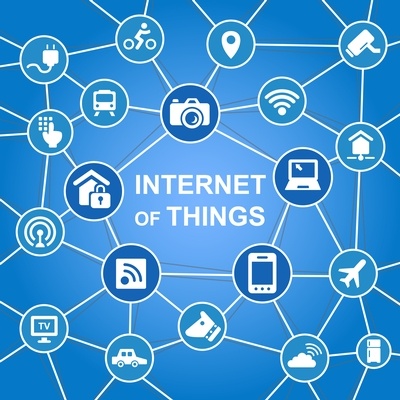“For a project manager . . . the impact of the IoT is similar to the advent of the touch screen.”
—Pete St. Pierre, president of IoT industry group IPSO Alliance and IoT product manager at Oracle.
If the Internet of Things (IoT) represents a grand opportunity for project managers (and especially for IT project managers), the challenge of diving into a new domain can be intimidating. This blog post is designed to help remove the fear of starting out and provide useful footholds.
What is the Internet of Things (IoT)?
The Internet of Things, according to Webopedia, is the network of physical objects that have internet connectivity, and the communications that happen between any one of these objects and other connected systems and devices. In short, IoT connects anything with an on/off switch to the internet or to each other. Examples of IoT in action include security systems, thermostats, electronic appliances, household lights, alarm clocks and more.
The complexity of IoT projects—incorporating sensors to servers, software to storage, integration to data analytics to communications—makes them challenging.
As you approach your first Internet of Things project, here are some important ideas and practices to keep in mind.
1. Understand the big picture.
Start with a question, specifically: What specific problem are you trying to solve? IoT often addresses failure points, broken business processes or actionable information about operations or customers. Grasp the specific use case for your project, which could range from a self-driving car to locations of equipment to preventive maintenance to irrigating a vineyard. The more specific the better. “Derived insight response time” is a critical IoT concept, referring to the data or guidance needed to make a decision. The shorter the response time, the closer the computational analysis to the sensor should be.
2. Pick a strong technical lead.
IoT projects are quite technical, so heed Susanne Madsen’s advice in her recent Liquid Planner blog post 5 Considerations for Managing Large IT Projects, “Large technology projects are complex and often require that multiple technologies and components are designed and integrated into a tailored solution. Such projects contain a lot of uncertainty and rarely go according to plan.” The project manager needs a strong technical lead to manage or clarify this complexity. Without a strong technical lead, the PM is left to make technical decisions based on poor information.
3. Phase the project.
Break the project into manageable phases or start with a proof of concept stage where you can try, at relatively low risk, to prove that your IoT project plan will work.
4. Test often.
Do this especially for interfaces between different elements in IoT such as sensors and communication devices that collect the raw data. Also, try software cleansing the raw data to ready it for analytics.
5. Understand (or select) an IoT reference architecture.
With your technical lead, address which specific technologies you will use to address the seven-layer architecture emerging as a best practice. The most comprehensive version, funded by the European Union, is from the Internet of Things Architecture (IoT-A) research project. IT consulting firm Sirius Computer Solutions has a more concise summary (complete with Cisco graphic) in the white paper Four Key Strategies to Kickstart Your IoT Revolution.
6. Pick your project team.
With all the technologies required in IoT, you’ll need diverse talents: Hardware and software engineers, embedded device experts, wireless whizzes, storage and integration pros, database and server clustering specialists, etc. Have your technical lead help you identify the skills and number of hours needed. IoT experts are still rare, so don’t be afraid to add outside consultants to fill in gaps and transfer skills, even at a steep price.
7. Pick your project infrastructure.
There are a lot of decisions to be made—on sensors, storage, servers, integration, data analytics, communications and multiple types of software, including a database. It’s common practice to opt for an open source database.
8. Maximize sharing.
Communicate with team members regularly and urge them to talk to each other about what’s going on, their concerns, findings, etc. Using online project management software can be a huge facilitator for interacting and tracking progress—especially when team members are located remotely or in different cities.
9. Build team competencies.
Your organization’s first IoT project won’t be its last. Your project team will learn a lot on your debut IoT project. And that knowledge that proves valuable to your team and the company on future IoT projects.
10. Learn about fog computing.
Fog computing puts processing power into smart devices that are placed close to the sensors, which generate the data. “Fogging” improves efficiency and reduces the amount of data that must be sent over the network or into the cloud. Consider cloud infrastructure as both highly available and elastic. (In meteorology, fog is simply a cloud that is close to the ground—hence this metaphor.)
11. Get ready to deal with your team’s frustration.
It’s tough doing cutting-edge work, but you can inspire your team to move from frustration to exhilaration. You are all part of a strategic initiative, so make that a motivator.
Your experience managing your first IoT project will put you into an elite group—something that will only advance your career. You’re not just another IT project manager, you’re an IoT project manager with hard-won proficiency in this emerging field.
For more on IoT, see the Industrial Internet Consortium website (a tutorial but especially the dozen case studies on what companies are doing in IoT). The IPSO Alliance also offers helpful resources.
Are you a pioneer? Share your experience on what you learned from managing an Internet of Things project.







